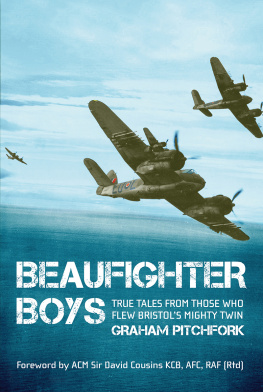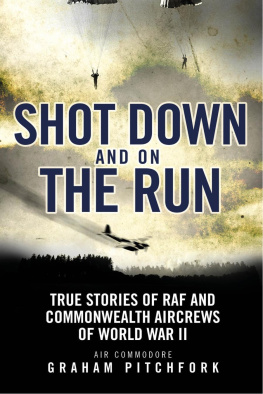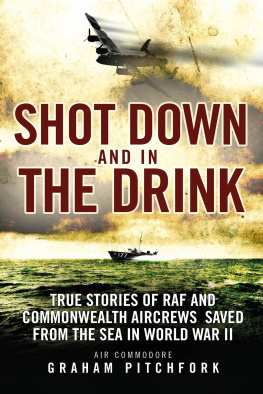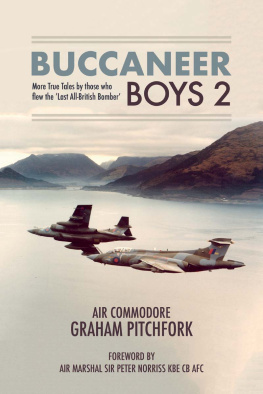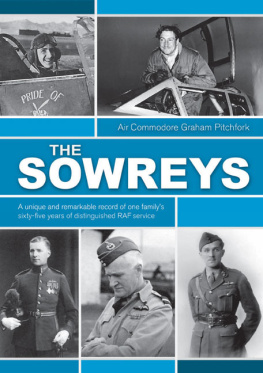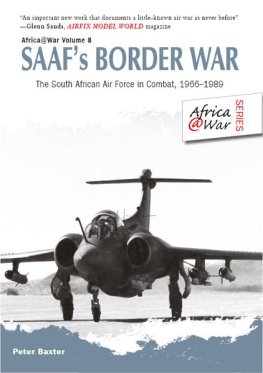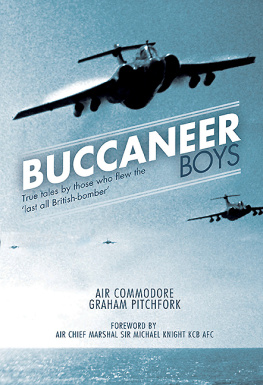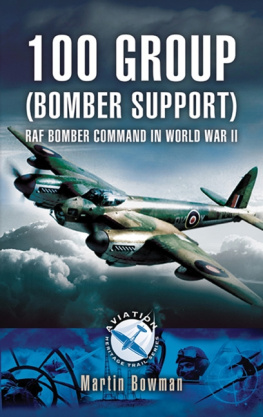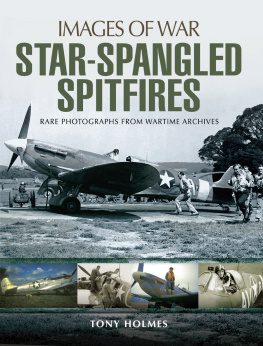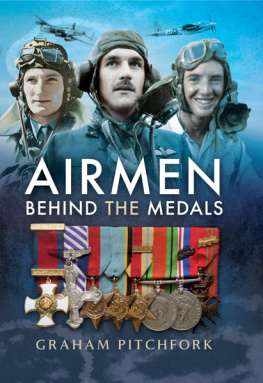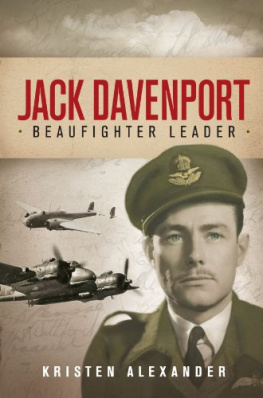Pagebreaks of the print version

BEAUFIGHTER BOYS
By the same author
Men Behind the Medals
The Buccaneers
Men Behind the Medals A New Selection
Shot Down and on the Run
Shot Down and in the Drink
Royal Air Force Day by Day
The RAFs First Jet Squadron
The Battle of Britain Story
The Sowreys
Buccaneer Boys
Airmen Behind the Medals
Forever Vigilant
Royal Air Force Day by Day 100
BEAUFIGHTER BOYS
TRUE TALES FROM THOSE WHO FLEW BRISTOLS MIGHTY TWIN
AIR COMMODORE GRAHAM PITCHFORK MBE, FRAeS
FOREWORD BY
AIR CHIEF MARSHAL SIR DAVID COUSINS KCB, AFC, RAF (RTD)
GRUB STREET LONDON
Published by
Grub Street
4 Rainham Close
London SW11 6SS
Copyright Grub Street 2019
Copyright text Graham Pitchfork 2019
A CIP record for this title is available from the British library
ISBN-13: 978-1-911621-44-7
eISBN-13: 978-1-911621-82-9
Mobi ISBN: 978-1-911621-82-9
All rights reserved. No part of this publication may be reproduced, stored in a retrieval system, or transmitted in any form or by any means electronic, mechanical, photocopying, recording or otherwise, without the prior permission of the copyright owner.
Formatted by Caroline Teng
This book is dedicated to
All those who flew and serviced the Beaufighter
Remembering those who failed to return
FOREWORD
I first became aware of the Beaufighter shortly after arriving at the RAF College Cranwell in 1961 to begin officer training. A fellow cadet and good friend was the son of Air Vice-Marshal (as he later became) Desmond Hughes who was a gallant and high-scoring night-fighter ace in World War Two. He had boundless admiration for the Beaufighter and his reflections leave one in no doubt that it was a workhorse of the skies.
Iconic aircraft like the Spitfire deservedly attract heroic adjectives and other worthy synonyms. But when military aviators use the word workhorse it takes on a very special meaning. It invariably implies that the aircraft can carry out a number of roles. It also implies a rugged aircraft that can absorb a great deal of punishment and damage and still bring the crew home safely. It suggests an aircraft that can carry a formidable amount and variety of weapons. Beaufighter Boys reinforces all those attributes. It even goes further and confirms the aircrafts vital contribution to the lethality of air power in World War Two that it so richly deserves. The vivid personal reminiscences of those who flew and operated the aircraft also demonstrate the deep admiration and affection in which they all held the aircraft, despite the high-attrition rates.
This book, however, offers more than that. Military aircrew can be tribalistic. They invariably develop passionate loyalties for the aircraft they flew and those they flew with. Indeed, these admirable traits have been reflected in the success of Grub Streets Boys series.
Military aircrew also have other shibboleths. They can believe they invented the wheel when it comes to the development of tactics. As one who thought he was breaking new ground in flying Lightnings on interceptions at low level at night over the North Sea, and then low-level attack sorties in the Buccaneer, it was salutary to discover that the Beaufighter crews across a significant array of roles and in different theatres had done it all in what was a truly multi-role aircraft of its day.
Indeed the author, Graham Pitchfork, who has a very extensive background with the Fleet Air Arm and Royal Air Force Buccaneer force, drew on the Beaufighter Strike Wing experience in formulating contemporary maritime attack tactics an experience which coincidentally created his lasting interest in the Beaufighter. The aircraft must surely serve as the genesis and concept for later aircraft like the Buccaneer and Phantom and Tornado with its ruggedness and versatility and two-man crew concept.
For those with an interest in aviation and iconic military aircraft, this book, written and researched and compiled with such thoughtfulness and thoroughness and insight by Graham Pitchfork, is an essential page-turning read. I hope you enjoy it as much as I did.
Air Chief Marshal Sir David Cousins KCB, AFC, BA, RAF (Rtd)
INTRODUCTION AND ACKNOWLEDGEMENTS
In 1965 I began a long association with the Buccaneer strike-attack aircraft, initially in the anti-shipping role. It soon became apparent to me that we were following in the footsteps of the RAFs World War Two Strike Wings of Coastal Command. I became fascinated by how the tactics had evolved and how the Beaufighter was so effective. As a result, I began to see the similarities between the Beaufighter and the Buccaneer and the men who flew the two aircraft. Both came from the same breed.
As we developed the tactics for the Buccaneer, so we followed the principles of the Strike Wings. First send in a section for defence suppression followed by the attackers with their dedicated weapons torpedoes for the Beaufighter and air-to-surface missiles, in our case MARTEL, for the Buccaneer. Later in my time on the Buccaneer, when operating over Norway in the long-range interdiction role and attacks against amphibious forces, so the similarities between the two aircraft became even more apparent.
All this led me to look in much greater detail at the activities of the wartime Beaufighter crews. After retiring from the RAF in 1995 I became involved in the Aircrew Association as its archivist and this gave me the opportunity to meet many ex-Beaufighter Boys and form firm friendships. I admired their modesty and stoicism we were only doing our job and I decided that their exploits should be recorded. Hence this book is a tribute to them and their ever-faithful ground crew.
I have many people to thank for helping me to bring this book into being. I am very grateful to my old friend and fellow Buccaneer Boy, Air Chief Marshal Sir David Cousins for his eloquent and moving foreword.
Many Beaufighter veterans sent me their stories and memoirs. Sadly, the majority have now passed away but I remain forever grateful for their support and generosity. Jack Anderson RAAF, Freddie Baldwin, David Bellis, Jim Blake, Jackie Briggs DFM, Roy Butler DFC, Keith Collett RAAF, Des Curtis DFC, Tony Day RCAF, James Denny, Bill Dickinson, George Dowding DFC, RCAF, John Edgar DFM, David Ellis DFC, Les Fitton, Jeff Forrester, Pat Fry DFC, Arthur Hall DFC & Bar, Bill Higgins, Hilly Hilliard DFC, Spike Holly, Jack Howe CGM, Air Commodore Peter Hughes CBE, DFC, Harry Humphries, Stuart Legat, Geoff Long, William Mann DFC, RAAF, Joe Marquis DFC, Jack Meadows DFC, RCAF, Peter Montgomery, Roy Nesbit, Bernard Nicholls, Bill Powell DFC, Ray Price DFC & Bar, Air Vice-Marshal Michael Robinson CB, Bill Rogers RCAF, Bob Sterling, Athol Sutherland-Brown DFC, RCAF, Ken Waldie RCAF and Peter White RAAF.
Michael Allen DFC & 2 Bars and Bob Willis MBE, DFC had their memoirs published and they gave me permission to use extracts from their books. Richard Pike kindly allowed me to adapt excerpts from his biography of his father and Woodfield Publishing gave permission to use extracts from Dennis Spencers book. These four books are listed in the bibliography.
I am also very grateful to numerous families who sent me accounts, photographs and logbooks of their Beaufighter Boys. My thanks go to Mary Bite, Terry Dowding, Helen Evers, Miranda Freer, Paddy Hughes, Kate Masheder, John Milne, Sue Rawcliffe and Ian Spencer.
As always, my aviation writer friends answered the call and thanks go to Tony Buttler, Ian Carter, Don Clark, Mike Dean, Ken Ellis, Chris Goss, Chris Granville-White, Frank Haslam, Tony Holmes, Jeff Jefford, Fred Langan, Ian McIntosh, Simon Parry and Andrew Thomas.

